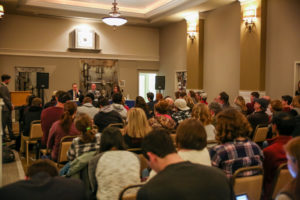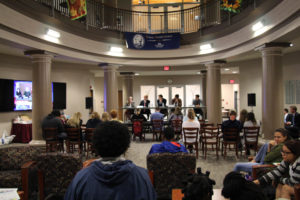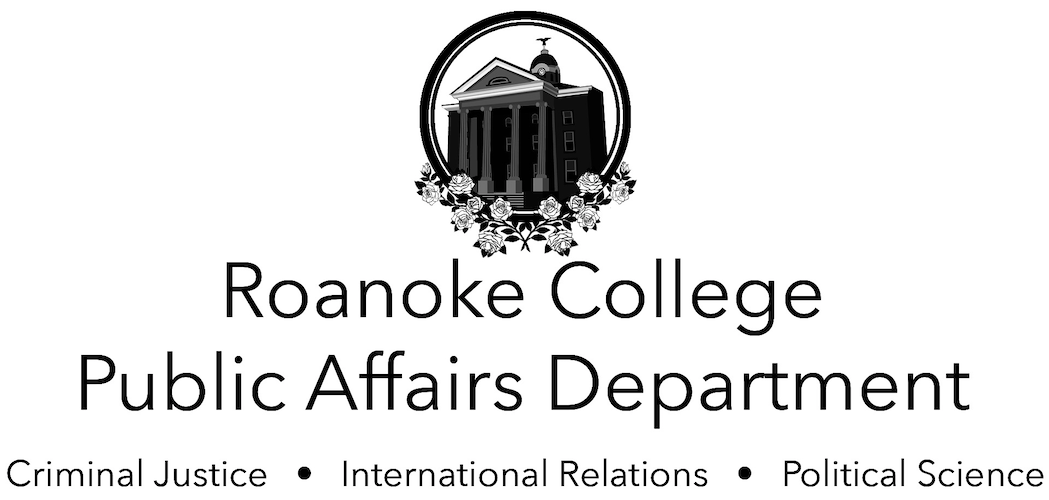Students, professors, faculty members, forget about the exams you have this week or the stack of papers you are about to grade. Evade yourselves from the end of the semester stresses that I am sure are so diligently clouding your every thought. Stop, take a minute, and reflect on how truly fast not just this spring semester flew by, but the entire year. It seems like just yesterday I was stepping foot inside Francis T. West Hall to start my second year at this college, and here we are with one week remaining before everyone packs their bags and heads off. But what really seems like just yesterday was the rejuvenation of Public Affairs Society (PAS). In fact, just two years ago the organization was non-existent until Dr. Garrison called upon public affairs students who aspired to change the status quo and create a department wide organization for students driven to promote sound public discourse. Today, the organization stands tall with a clearer vision and deeper roster of ambitious students to lead the charge.
The vision of Public Affairs Society was best said by Kasey Reece at the Health Care Panel talk a month back, “The charter called for fostering interaction between students, faculty, and the community through civil thought, active engagement, and an exploration of our republic; all with the purpose of manifesting politically conscious and enlightened citizenry.” In their first year of accomplishing their objective, PAS hosted post-lecture receptions for Ambassador Jon Huntsman and Claes G. Ryn, while having an informative panel of professionals to discuss Drugs in the Valley and hosting the keynote speaker of the year, Dr. Michael Federici. On top of this, they held reading-based discussions that ranged from the modern police state to Abraham Lincoln. This first year earned the society the organization of the year award; however, if you ask me, their efforts the second year have surpassed the first.
In their second year, Public Affairs Society has more than doubled their number of events, as well as attracted a variety of members from the community. Most notably, all the seats in the house were filled at the Healthcare Panel with Rodney Whitlock, Dr. Bryan Parsons, and Dr. Shannon Anderson. Members from the community, faculty, and students packed the building as they wanted to hear what the experts had to say about the status of U.S. health reform. Earlier in year, Public Affairs Society hosted a panel titled, “Exploring the Police State.” These are two examples of how PAS brought in experts from a variety of fields to meet their goal — rational, student, and community-wide public discourse.
These were only two of the events PAS held this year, although I believe they represent the true progression of PAS and how they have become a phenomenal student-led organization. They went on to host two separate Debates before the Debates, by having a students debate political topics that would air on the presidential debate stage the same night. In addition to the debates, PAS hosted an Election Viewing Party where students could come in and view the results of the election. Aside from election-based events, they also hosted an event titled, “The State of Free Speech.”
What stands out the most to me is the progression of PAS in only two years. An organization that started from nothing has been fueled by ambitious, discourse-driven public affairs students who have found a way to galvanize faculty, student, and community involvement to respectfully discuss our nation’s most pressing issues. They have drastically expanded the range of experts invited to panels, as well as the number of students in attendance.
Perhaps these are just the early stages of quality public discourse at Roanoke College, but I know who is fueling it.
